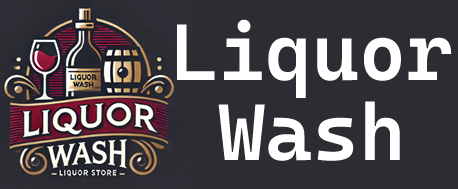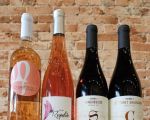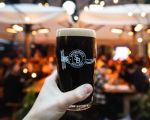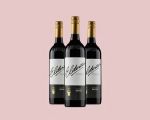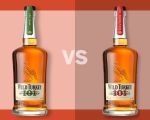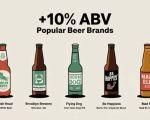Exploring the New Trends in the Alcohol Industry: A Look at 2025
As we dive deeper into 2025, the alcohol industry is witnessing some fascinating shifts. These changes are not only redefining how we experience drinks but also reshaping the entire market landscape. From new flavors to sustainability, here are the latest trends that are making waves in the alcohol industry.
1. The Rise of Craft Beverages: A Nod to Local and Unique Flavors
In the past decade, craft beverages have gained incredible momentum, and in 2025, they’re still going strong. Small, independent breweries, distilleries, and wineries are producing drinks that cater to more personalized and unique consumer tastes. Gone are the days of mass-produced, generic beverages. Consumers are now more willing to pay a premium for a product that tells a story – whether it’s the locally sourced ingredients, the sustainable production process, or the artisanal craftsmanship that goes into every bottle.
Take, for example, the rise of craft beers and spirits in the United States. Craft breweries are focusing on innovative flavors and creative production techniques, leading to an explosion of new styles. Whether it’s a limited-edition IPA or a whiskey aged in unique barrels, the demand for innovative, locally-produced beverages is higher than ever before.
2. Sustainability Takes Center Stage: Eco-Friendly Alcohol Production
Sustainability is no longer just a buzzword—it’s a necessity in the alcohol industry. Consumers are increasingly aware of the environmental impact of their choices, pushing brands to prioritize sustainable production practices. In 2025, we’re seeing more distilleries and breweries shift toward eco-friendly packaging, organic ingredients, and energy-efficient production methods.
One notable example is the movement towards zero-waste production. Some distilleries are now repurposing by-products from their production processes into biofuels or animal feed, reducing waste and their carbon footprint. Additionally, many companies are opting for glass bottles made from recycled materials or even introducing edible packaging to reduce landfill waste.
3. Premium Spirits and the Push for Quality Over Quantity
As the alcohol industry evolves, there’s a noticeable shift towards premium, high-quality spirits. Consumers are increasingly moving away from mass-market brands in favor of artisanal, small-batch products. This trend is especially evident in the world of whiskey, vodka, and rum, where limited-edition releases and single-barrel offerings are gaining popularity.
What makes premium spirits so appealing? It’s all about the craftsmanship. People are looking for authentic, refined experiences rather than just a drink to sip. They want to explore the nuances of flavor, the history behind each bottle, and the expertise that goes into every step of production. It’s not just about getting drunk anymore—it’s about savoring a unique, high-quality product that’s as much about storytelling as it is about taste.
4. Health and Wellness: Low-Alcohol and Non-Alcoholic Alternatives
In a world where health and wellness are becoming top priorities for many consumers, it’s no surprise that the alcohol industry is also adapting. The demand for low-alcohol and non-alcoholic beverages has skyrocketed in recent years, and 2025 is no exception. Whether it’s a low-sugar cocktail, a non-alcoholic beer, or a CBD-infused spirit, there’s a growing market for people who want to enjoy the experience of drinking without the negative side effects.
For example, alcohol-free spirits are a major player in this trend. Brands like Seedlip have led the charge by offering sophisticated, adult beverages that mimic the taste and complexity of traditional spirits but without the alcohol content. This allows consumers to participate in social occasions without compromising their health or sobriety.
5. Technology Meets Alcohol: Innovations in Production and Distribution
Technology is making a significant impact on the alcohol industry in 2025. From artificial intelligence (AI) in flavor creation to blockchain technology in distribution, the possibilities are endless. AI-powered systems are now being used to craft unique flavor profiles by analyzing trends and consumer preferences, allowing brands to create beverages that resonate with the masses.
Additionally, blockchain technology is being integrated into the supply chain to ensure transparency and traceability. This not only helps consumers make more informed purchasing decisions but also assists brands in building trust by proving the authenticity of their products.
6. The Evolution of Alcohol Consumption Habits: From Social to Solo Sipping
In the past, alcohol was often associated with large social gatherings, but 2025 has seen a rise in solo drinking habits. People are now more likely to enjoy a cocktail at home after work or to indulge in a craft beer during a quiet evening. This change has led to an increase in demand for smaller, more accessible packaging, such as single-serving cans or mini bottles.
In fact, many premium spirits are now being sold in smaller, more affordable quantities, allowing consumers to enjoy high-quality products without committing to a large bottle. This shift is in line with the growing trend of mindful drinking, where people are more conscious of their consumption and prefer quality over quantity.
7. The Role of Social Media in Shaping Alcohol Trends
Social media continues to be a driving force behind the alcohol industry’s evolution. Platforms like Instagram, TikTok, and YouTube have become essential for marketing and consumer engagement, with brands using these channels to showcase new products, launch campaigns, and engage with their audience in real-time.
Influencers and content creators play a key role in shaping consumer preferences by showcasing their favorite drinks, sharing recipes, and promoting limited-edition releases. In fact, some of the most popular alcoholic beverages of 2025 have gained their fame through viral social media campaigns.
8. Experiential Marketing: Immersive Alcohol Experiences
Consumers are increasingly looking for unique, immersive experiences that go beyond just drinking a beverage. This has led to a rise in experiential marketing within the alcohol industry, where brands are offering events, tours, and tastings that allow consumers to engage with their products in a deeper way.
For example, whiskey distilleries are offering guided tours where visitors can learn about the history of the brand, participate in tastings, and even create their own custom blends. These experiences are not only educational but also provide a memorable and personal connection to the product, which helps build brand loyalty and increase sales.
9. Global Influences on the US Alcohol Industry
While the alcohol industry in the US has its own distinct flavors and traditions, it is increasingly being influenced by global trends. International beverages, such as Japanese whiskey, tequila from Mexico, and rum from the Caribbean, are becoming more popular among American consumers.
This global influence has led to a more diverse alcohol market, with consumers becoming more adventurous and willing to try drinks from different cultures. It’s not just about American-made products anymore; it’s about exploring a world of flavors and experiences that transcend borders.
